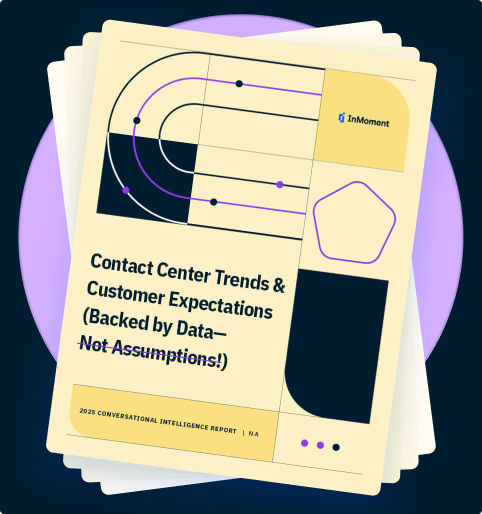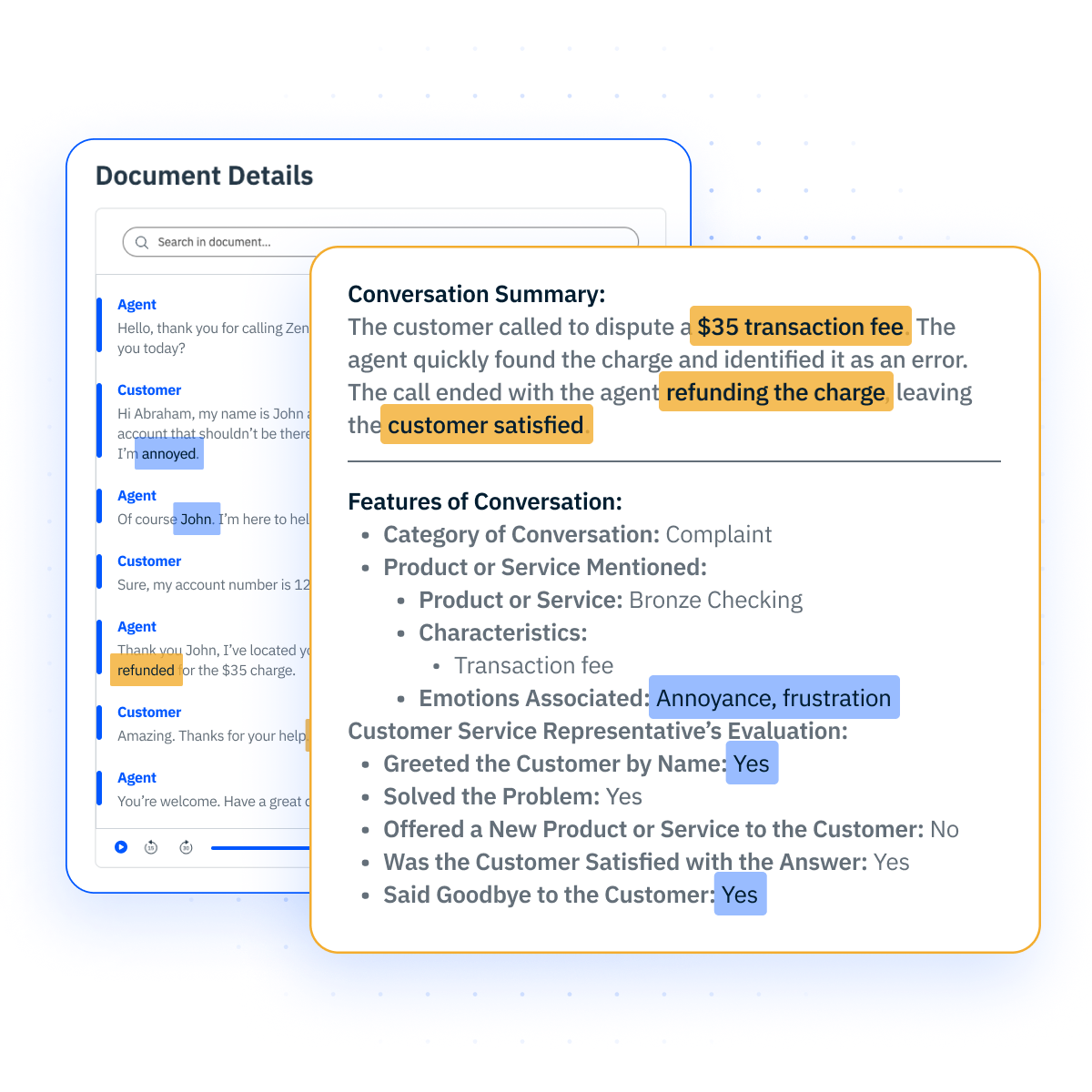6 Tips to Reduce Cost to Serve (CTS) in Call Centers
Reduce call center expenses while maintaining great CX. These 6 CTS reduction tips help you optimize people, processes, and platforms.
Call centers face relentless pressure nowadays: customers expect lightning-fast, personalized service, while leaders demand better margins. Yet most operations are still drowning in unnecessary calls and manual processes that burn through resources without improving customer satisfaction.
Ignoring the cost of serving customers means missed growth and shrinking profits, which makes it difficult to stay competitive in a crowded marketplace. Therefore, the brands that win are the ones that address their cost to serve with the same intensity as their top-line growth targets.
What Is Cost to Serve (CTS)?
Cost to serve (CTS) is the real price tag attached to every customer interaction in your call center. It’s often called “cost per call,” but it covers so much more than the interaction over the phone. CTS accounts for every activity required to satisfy a customer request, including staffing, training, technology, overhead, and the time your agents spend resolving each ticket.
When you break it down, CTS becomes the most actionable metric for understanding where your resources go and how much value you actually deliver for every dollar spent. The lower your cost to serve, the more efficiently you run, and the easier it is to provide standout customer experiences (CX) without blowing your budget.
Why Is It Necessary for Call Centers to Reduce the Cost to Serve?
1. Rising Customer Expectations and Limited Budgets
2. Operational Efficiency Is a Competitive Advantage
3. Cost Pressures from High-Volume Channels
Call center costs are under the microscope. According to ContactBabel’s 2025 US Contact Center Decision-Makers’ Guide, the average cost of an inbound call is $7.16, which is 18% more than email and 42% more than web chat. As a result, leaders are under pressure to deliver call center cost reduction without sacrificing service quality.
With rising call volume, complex customer issues, and the shift to omnichannel support, every dollar spent in your contact center must deliver measurable value. That’s why reducing metrics like cost per call, call volume, and average handle time (AHT) should be strategic imperatives for businesses looking to keep pace with competitors.
Smart call center management means attacking every layer of cost, from labor costs and staffing to the workflows and call center software you choose. Reducing cost to serve doesn’t just protect your bottom line; it helps boost agent performance and keep your brand relevant in a market where service level expectations climb every year.
Here’s what’s putting the pressure on:
Rising Customer Expectations and Limited Budgets
The modern customer expects instant answers, personalized support, and frictionless experiences every time they reach out. According to InMoment’s 2025 Conversational Intelligence Report, 61% of customers expect brands to resolve their issue the first time they contact support. If this expectation is not met, they will start considering competitors.
But most contact centers are working with tighter budgets and higher operational costs than ever before. Leaders must find cost-effective ways to maintain high service quality, whether it’s through smarter training programs, better onboarding, or using self-service options like chatbots and interactive voice response (IVR) systems.
As a result, modern call centers must execute a balancing act: deliver outstanding CX without letting the CTS escalate.
Operational Efficiency Is a Competitive Advantage
Every inefficiency in your call center operations, from slow call routing to underutilized agents, increases the CTS. Businesses that optimize for operational efficiency outperform the rest, driving down cost per call and freeing up resources for higher-value work.
Automation and artificial intelligence (AI) tools are helpful here, as they handle routine tasks and perform the analytical heavy-lifting. These features enable your agents to focus on strengthening customer relationships through effective cross-selling or offering personalized advice on making the most of your product.
Cost Pressures from High-Volume Channels
With a growing expectation for omnichannel contact centers, customer support teams must handle a growing number of interactions across multiple channels. This surge in volume places enormous cost pressures on businesses. Unlike traditional phone support, digital channels such as chat and email can scale quickly, but they also risk overwhelming support staff without effective management.
As the number of interactions rises, so does the overall expense, making it critical for organizations to reduce the per-interaction cost to maintain profitability and operational efficiency.
6 Tips to Reduce Cost to Serve in a Call Center
1. Identify High-Cost Interactions First
2. Use Conversational Intelligence to Analyze Customer Interactions at Scale
3. Deflect Routine Inquiries With Self-Service Options
4. Improve First Contact Resolution (FCR)
5. Reduce Average Handle Time Without Hurting Quality
6. Monitor and Act on Data Regularly
Cost reduction starts with identifying inefficiencies before adopting the right tools, data, and processes to resolve them. Here are six strategies for lowering costs and delivering higher customer satisfaction, regardless of your industry or team size:
1. Identify High-Cost Interactions First
Not every call is created equal. Use call analytics and workforce management tools to pinpoint which customer interactions are contributing the most to operational costs.
For example, troubleshooting billing issues tends to have a much higher AHT than basic FAQs. By tracking these metrics in real time, you can focus your optimization efforts where they’ll have the biggest impact.
2. Use Conversational Intelligence to Analyze Customer Interactions at Scale
Manual call monitoring is too slow for modern contact center management. This is where AI-powered applications like conversational intelligence (CI) offer a better alternative. It automatically reviews agent-customer interactions across relevant channels to surface key insights like sentiment shifts and agent performance metrics.
With InMoment’s conversational intelligence software, call center leaders gain real-time visibility into major cost drivers. The tool generates automated call summaries that help reduce AHT by up to 33%, as it prevents the need for lengthy or frequent calls. It also categorizes interactions by topic and uses sentiment analysis to highlight instances of customer dissatisfaction. This level of insight allows you to streamline processes, reduce escalations, and optimize both agent performance and customer satisfaction.
3. Deflect Routine Inquiries With Self-Service Options
Free up your human agents by deflecting repetitive tasks to self-service solutions like chatbots, IVRs, and robust knowledge bases. When customers resolve common issues like password reset and order status updates on their own, you reduce call volume, cut costs, and deliver a smoother customer journey.
4. Improve First Contact Resolution (FCR)
Every follow-up or repeat call drives up your CTS and erodes customer satisfaction. Therefore, First Contact Resolution (FCR) is a focal metric for call centers looking to accelerate issue resolution.
Improving FCR requires a multi-faceted approach. Start by investing in comprehensive agent training that focuses on product knowledge, soft skills, and problem-solving techniques.
Modernize your call center software to provide agents with a unified view of the customer, including their history with your business and recent interactions.
Intelligent call routing is equally important; connecting customers with the right agent or team from the outset greatly improves the likelihood of resolution on the first contact.
When you prioritize FCR, you take an important step towards call volume reduction, which in turn lowers the cost per call. The added benefit is a successful CX program, as customers associate fast and accurate resolution with a positive brand experience.
5. Reduce Average Handle Time Without Hurting Quality
While reducing the AHT helps with cost reduction, it shouldn’t result in agents rushing to complete calls. Without effective issue resolution, a lower AHT won’t help reduce the FCR, and customers will remain dissatisfied.
Start by analyzing every step of the customer interaction to find unnecessary actions or roadblocks. Streamline key workflows to ensure call center agents can move from greeting to resolution without wasted effort or confusing detours. Ensure they have instant access to up-to-date knowledge bases and resources so they don’t lose valuable minutes searching for answers.
It’s also crucial that your call scripts are flexible and conversational, providing helpful prompts to keep calls focused while still allowing agents to show empathy and adapt to the customer’s needs.
Leverage technology to provide real-time coaching and suggestions, so agents can respond quickly and accurately as issues arise. Regularly review call summaries to pinpoint what’s slowing things down, whether it’s confusing processes, technical glitches, or complex customer issues.
Addressing these pain points through updated training and streamlined tools helps reduce AHT without sacrificing support quality.
6. Monitor and Act on Data Regularly
CTS reduction is an ongoing process requiring constant attention and quick adaptation. Instead of setting metrics and walking away, leading organizations build habits of regularly reviewing key performance indicators (KPIs) such as cost per call, AHT, and FCR.
Real-time dashboards help here by providing a live snapshot of your call center performance at the moment. This keeps your team in the loop regarding your operational efficiency, without having to rely on outdated data.
With InMoment’s omnichannel reporting, every team member can see trends, track emerging issues, and identify the exact areas where costs are creeping up. It also provides a user-friendly dashboard builder, ensuring anyone can create high-impact visuals for storytelling without needing deep technical expertise. This makes it possible to create custom dashboards for visualizing and tracking metrics related to customer satisfaction, agent performance, and call center operations.
The call centers that succeed in long-term cost control are those that regularly act on what the data is telling them. Instead of resting on their laurels, they keep fine-tuning their operations, ensuring customers receive consistently high-quality service.
Reduce Cost to Serve With Conversational Intelligence From InMoment
Reducing cost to serve in your call center is all about working smarter. By targeting high-cost interactions, automating routine tasks, improving FCR, and empowering agents with the right tools, you lower operational costs without sacrificing the customer experience.
But to make these changes stick, you need real-time data and actionable insights at scale.
InMoment’s conversational intelligence software helps you accomplish these changes. It leverages AI-powered analytics to reveal what’s driving costs, uncover opportunities to streamline workflows, and support your agents in delivering fast and effective customer support.
With InMoment, you get a 360-degree view of every interaction, so you can optimize every aspect of your operations and build a contact center that’s ready to meet modern expectations.
Schedule a demo today to start seeing real cost savings and increased efficiency throughout your call center!





